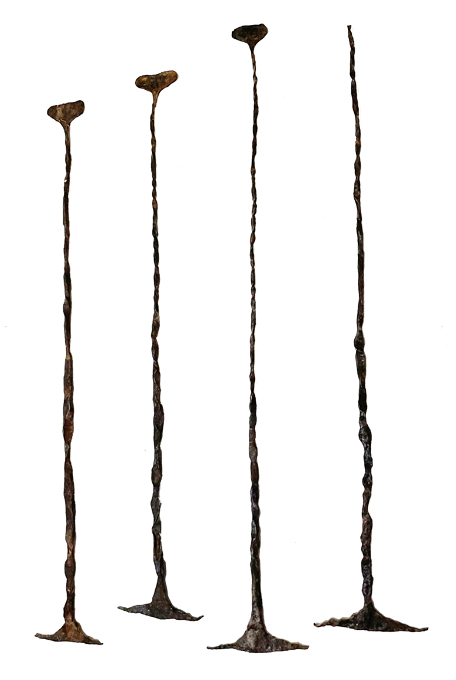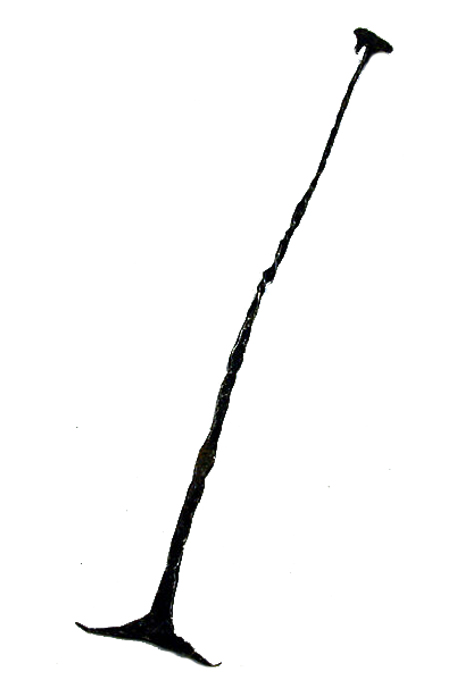Kissi Money |

iron_007071, iron_007072, iron_007073, iron_007074; Liberia, early 20th century 16 in to 18 in (40.64 cm to 45.72 cm) private collection of Walter Logan Fry |
| West Africans from the region of modern-day Liberia and Sierra Leone have used iron as a trading good and standard of value for a long time. Iron working had developed in the region by ca. 600 B.C., and was of extremely high-quality. Even in the Early modern period, West African iron and steel easily exceeded the quality of European steel. However, the relative lack of fuel available meant that West African iron was expensive compared to European iron.
Given the value of iron, it was used as a store of monetary worth, much as silver and gold in other cultures. That could take the form of objects, or as a fungible monetary unit, as kissi pennies. Kissi pennies were made by smiths in the form of long rods, with a "T" on one end (called nling or "ear"), and a bladed shape, not unlike a hoe on the other end (called kodo or "foot"). Kissi pennies ranged in length from about 6 inches (15 cm) to as long as 18 inches (46 cm). At one time, a score of oranges, or a bunch of bananas, could be bought for two. Because each one had relatively small value, they were often gathered into bundles (usually of 20). Prices compiled in the early twentieth century, for example, put the cost of a cow at 100 bundles, while bride price might be 200 bundles. Slaves, while the domestic slave trade was still working, might sell for 300 bundles. Kissi money is frequently found in the collections of museums of fine art. Below is an example from The Metropolitan Museum of Art in New York City, NY. 
Historical records do not note the use of this currency before the last years of the nineteenth century (ca. 1880); but they continued to be used as late as 1940 in Sierra Leone and the 1980s in Liberia, until gradually replaced by colonial coins and currencies. Reference: https://en.wikipedia.org/wiki/kissi_penny |